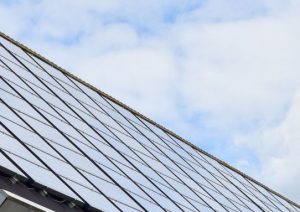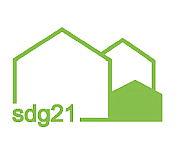
In Troisdorf, North Rhine-Westphalia, the largest tenant electricity project in Germany is currently running with subsidised funding from the so-called tenant electricity surcharge under the Renewable Energy Sources Act (EEG). The project, which was supported by EnergyAgency.NRW following an initial consultation, supplies 24 social housing apartments in three multi-storey buildings with a total of 75 residents with electricity. For this purpose, all roof surfaces were covered with photovoltaic modules with a total output of 86.9 kWp. The PV system is completed by six Powerwall 2 battery storage units from Tesla. "The tenants have committed 100 per cent to the project. In addition, the PV electricity, insofar as it is not consumed by the water-to-water heat pump or the tenants, is first stored in electricity storage units. This works so efficiently that we already reached an average self-sufficiency level of 83 percent in May. On isolated days and nights, even 98 percent," explains Frank Scholzen from Scholzen Immobilien, the company that owns the properties.
In rental electricity projects, electricity is generated in a rented property - by PV and/or combined heat and power (CHP) units. This direct electricity is often sold by the operator of the plant to the local energy supplier or - as in Troisdorf - by the landlord to the tenants. "The electricity offered to the tenants is cheaper than electricity from the grid. The advantage for the system operator is an additional income opportunity, as well as an ecologically sustainable electricity supply," explains Wilhelm Schröder from EnergyAgency.NRW, who accompanied the project in an advisory capacity.
However, the three buildings of Scholzen Immobilien are not only characterised by an innovative power supply, Troisdorf is also future-proof in the area of heat: The heating system consists of two water-water heat pumps with a combined thermal output of 76 kW. The well depth is only 14 metres - thanks to the high groundwater level not far from the Rhine. Scholzen: "The smart meters supplied by the Aachen-based company Discovergy enable continuous monitoring of the energy flows between the PV system, heat pump, energy storage and main meter."
In this complex and demanding project, many parties have to be coordinated. In Troisdorf, the following were involved:
- Priogo AG from Zülpich (specialist partner for photovoltaics, heating technology, electromobility)
- Discovergy GmbH from Aachen (smart metering systems)
- Stadtwerke Troisdorf GmbH (distribution system operator)
- Westfalen Group from Münster (residual electricity supplier)
- Vaillant Group from Remscheid (manufacturer of the heat pumps) and Geotechnik GmbH from Wesseling (well drilling company)
In the meantime, the company Scholzen Immobilien is planning another tenant power project in Düsseldorf.
By the end of April 2018, a total of 19 tenant power projects subsidised under the EEG with an installed capacity of more than 350 kWp had been realised in NRW. The EnergyAgency.NRW has published a brochure entitled "Mieterstrom - kurz erklärt" (Tenant Electricity - Explained in Brief), which presents in detail the technical and legal aspects that need to be considered when implementing projects.
Keywords:
Renewable, Tenant electricity, News Blog NRW, PV, Electricity storage



